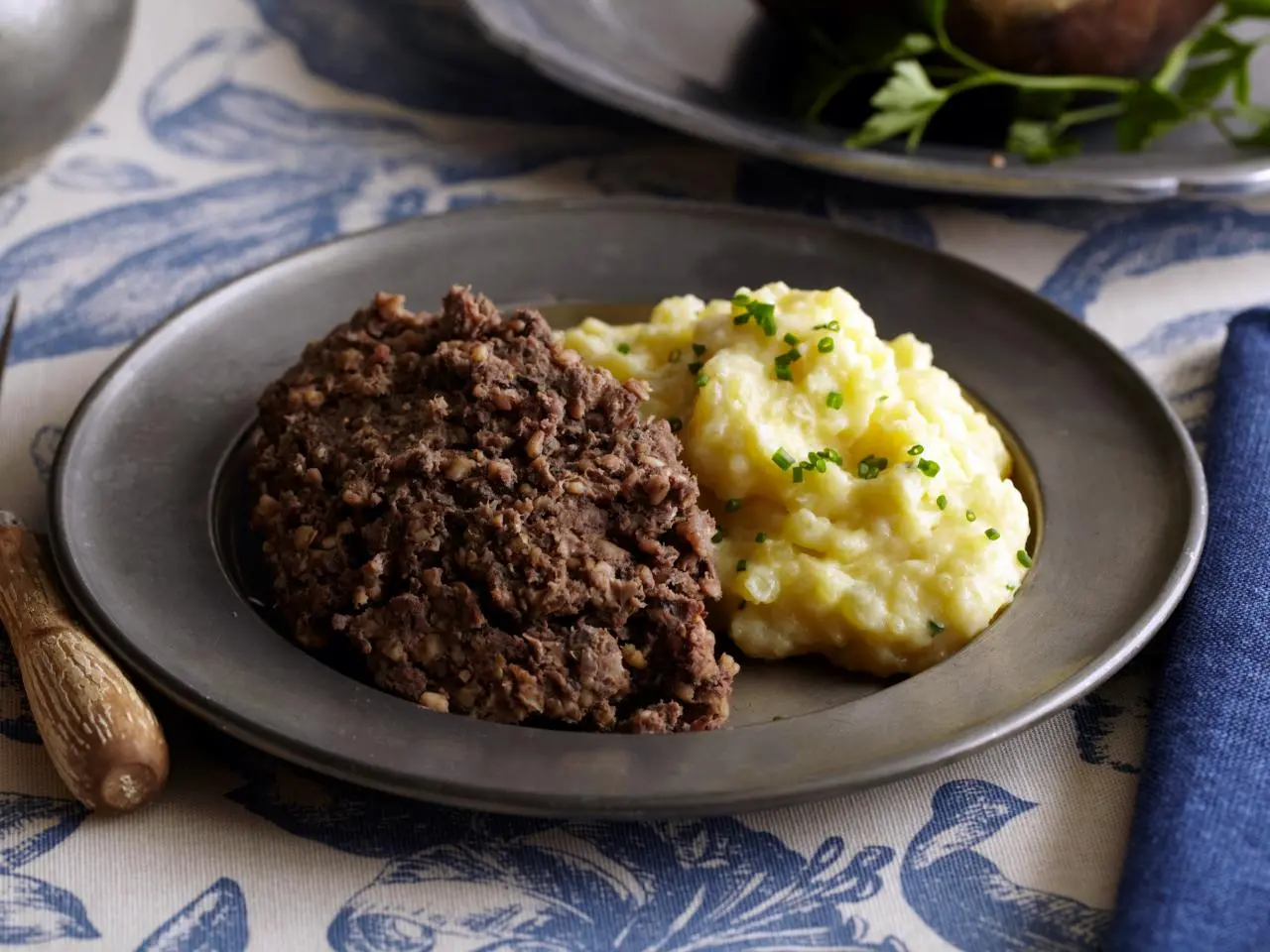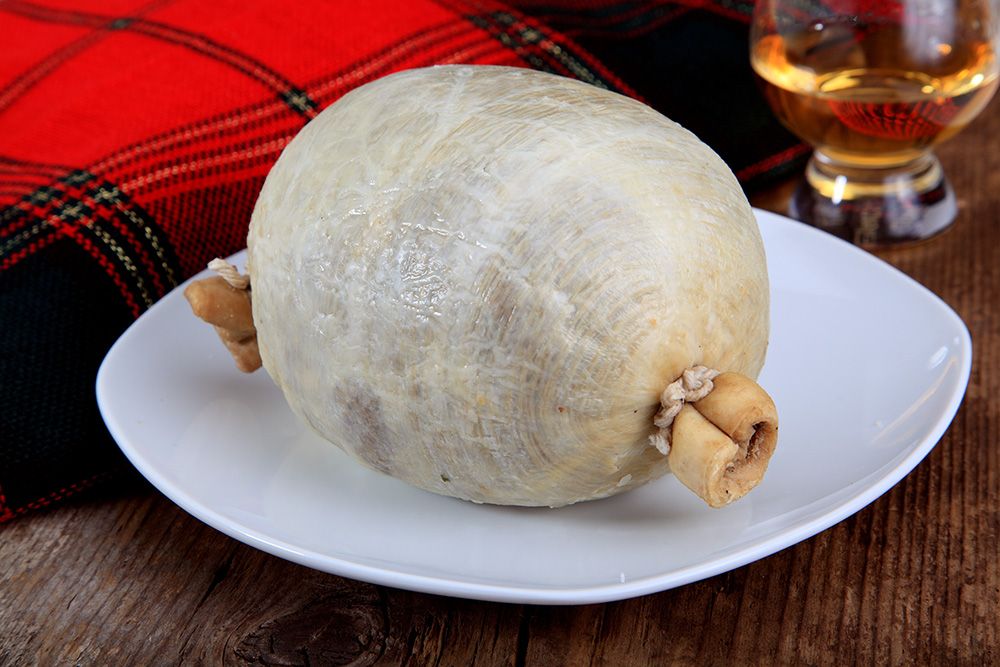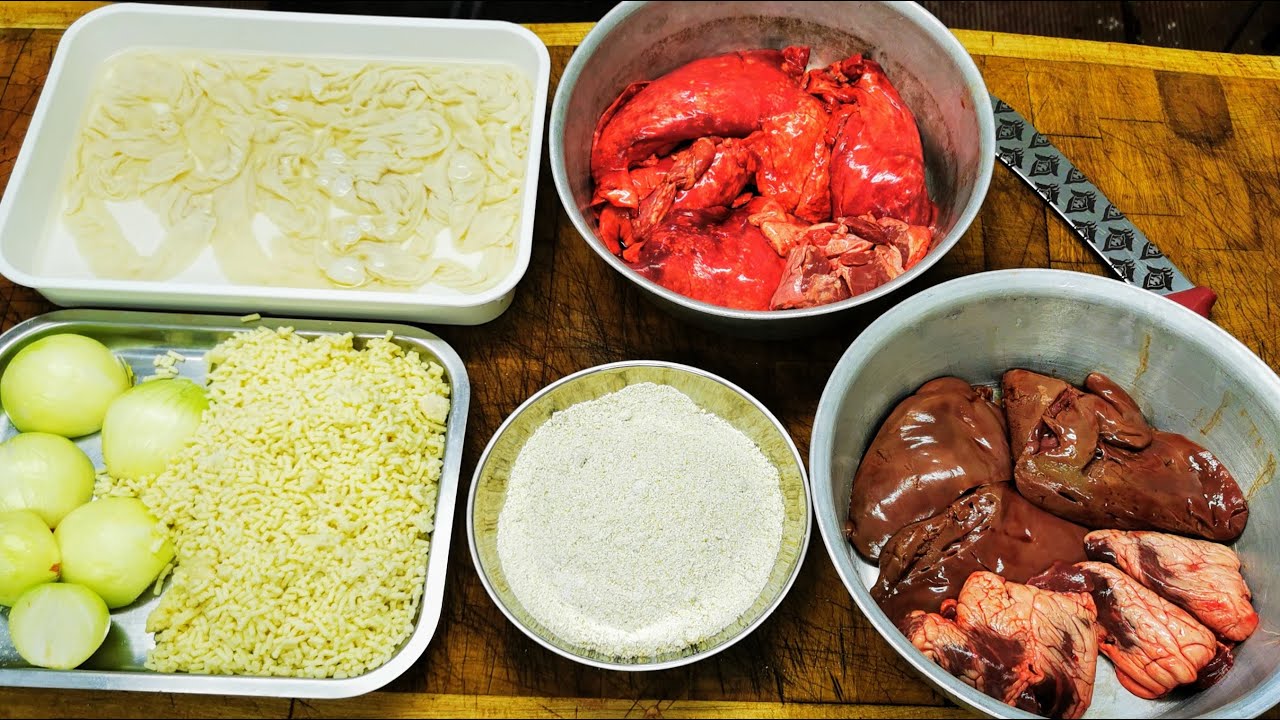Scottish Haggis Recipe - A Flavorful Tradition Worth Trying
Learn to make Scottish haggis with this classic recipe. Follow our tips for a flavorful, homemade haggis that brings Scotland’s heritage to your table.
Dec 23, 202412.8K Shares191.9K Views

Few dishes are as rooted in tradition and cultural pride as Scotland’s iconic haggis. Known for its rich, earthy flavors and its role in Scottishheritage, haggis is more than just a meal, it’s a celebration of Scotland’s culinary legacy. Traditionally served on Burns Nightin honor of poet Robert Burns, haggis holds a unique place in Scottish culture, symbolizing both resourcefulness and pride in local flavors. If you’re curious about how to make this renowned dish or looking to experience authentic Scottish cuisine, you’re in for a culinary adventure.
This guide will walk you through the process of creating traditional Scottish haggis at home. Although the recipe uses ingredients that might seem unusual to some, each component brings depth to the dish, making haggis a hearty, flavorful creation worth every step. With some patience and a sense of culinary curiosity, you’ll soon have a dish that captures Scotland’s bold flavors and history.
What Is Haggis?
Origins Of Haggis
Haggis dates back centuries and is thought to have originated as a way to use every part of an animal to reduce waste. In Scotland, it quickly became a staple, particularly among farmers and rural communities who celebrated resourcefulness. For anyone curious about authentic Scottish food recipes, haggis stands out as a rich representation of the country’s culinary traditions.
The dish is now cherished not only for its flavor but also as a symbol of Scottish pride, featuring prominently in Burns Night celebrations each January. Robert Burns, Scotland’s beloved poet, even wrote "Address to a Haggis," further cementing the dish’s place in Scottish culture.
Ingredients Explained
Traditional haggis includes a mix of sheep’s offal, typically the liver, lungs, and heart combined with suet, onions, oatmeal, and spices. These ingredients are mixed and cooked within a sheep’s stomach (or an alternative casing) to create a savory, textured dish. The offal brings rich, gamey flavors, while the oatmeal adds body and texture. The addition of spices like black pepper, nutmeg, and cayenne elevates the taste, making haggis both comforting and complex.
Traditional Vs. Modern Variations
While traditional haggis stays true to the original recipe, there are many modern variations for those who may not have access to certain ingredients or prefer a twist. Vegetarian haggis, for example, often substitutes beans, mushrooms, and lentils for meat, creating a similar texture and flavor profile. Some variations use different casings or even omit them entirely for a baked version.
For those taking part in Scotland culinary tours, sampling haggis in its diverse forms offers unique insight into both traditional and contemporary Scottish cuisine. True haggis purists, however, believe that cooking the dish in a casing adds a distinctive flavor and texture that’s worth seeking out.
Essential Ingredients For Authentic Haggis
Core Ingredients
For authentic haggis, these ingredients are essential:
- Sheep’s Pluck- This includes the liver, lungs, and heart, which provide rich, deep flavors.
- Oatmeal- Adds texture and helps bind the ingredients, contributing to the hearty consistency.
- Suet- This beef or mutton fat adds richness and keeps the haggis moist.
- Onion- Brings sweetness and balance to the dish.
- Spices- Common spices include black pepper, nutmeg, and a pinch of cayenne for a hint of warmth.
- Salt- Enhances the overall flavor and balances the earthiness of the offal.
Optional Ingredients And Substitutions
If you can’t source certain ingredients, there are substitutions available. Beef liver can replace sheep liver, and ground oats can substitute for whole oatmeal in a pinch. For those not keen on using a sheep’s stomach, sausage casings or even foil can be used to contain the mixture.
Where To Buy Ingredients
Many ingredients for haggis are best found at specialty butcher shops, especially the sheep’s pluck. Some online retailers also offer kits for traditional haggis that include hard-to-find ingredients, allowing you to try this dish even if you’re far from Scotland.
Step-by-Step Guide - How To Make Scottish Haggis
Preparation And Equipment Needed
Before starting, gather these items:
- Large pot for boiling
- Meat grinder or food processor for chopping the organ meats
- A sheep’s stomach or alternative casing (such as sausage casing)
- Large mixing bowl
Step 1: Clean And Prepare Organs
Rinse the liver, lungs, and heart thoroughly to remove any blood or impurities. Soak them in cold water for 30 minutes, then drain. Trim off any excess fat and membrane, making sure the organs are clean and ready for cooking.
Step 2: Boil And Grind The Ingredients
Place the cleaned organs in a large pot of salted water and bring them to a boil. Simmer for about 1-2 hours until tender. Once cooked, remove them from the pot and allow them to cool slightly. Using a meat grinder or food processor, grind the organs to achieve a coarse consistency, similar to ground beef.
Step 3: Toast The Oats
While the organs cool, toast the oatmeal in a dry pan over medium heat. Stir occasionally to prevent burning. Toasting gives the oats a nutty flavor, enhancing the overall richness of the haggis.
Step 4: Mix The Ingredients
In a large mixing bowl, combine the ground organs, toasted oats, suet, diced onion, salt, and spices. Mix everything well to ensure the flavors are evenly distributed. You want a consistency that holds together but isn’t too dry, add a little of the cooking liquid if needed to keep it moist.
Step 5: Stuff The Sheep’s Stomach
Spoon the mixture into the sheep’s stomach, filling it about two-thirds full to allow room for expansion during cooking. Secure the opening with kitchen twine, making sure it’s tightly closed to prevent any leaks. If you’re using an alternative casing, follow the same steps, ensuring a secure closure.
Step 6: Boil And Serve
Place the stuffed stomach into a pot of boiling water and reduce to a simmer. Cover and cook for 3 hours, checking occasionally and adding more water if necessary. Once cooked, remove the haggis carefully, allowing it to rest for a few minutes before slicing. Serve hot and enjoy with traditional accompaniments.
Serving And Pairing Suggestions
Traditional Accompaniments
In Scotland, haggis is typically served with "neeps and tatties" (mashed turnips and potatoes), creating a balanced, hearty meal. A rich, slightly sweet whiskey sauce also pairs well with the savory flavors of haggis, enhancing the overall experience.
Modern Serving Ideas
If you’d like a twist on tradition, try serving haggis as a burger patty or stuffed into pastries as a unique filling. Haggis fritters, deep-fried until crispy, offer a creative appetizer or snack, bringing a new texture to the classic dish.
Best Drinks To Pair With Haggis
Scotch whisky is a traditional choice for pairing with haggis, as its smoky, complex flavors complement the richness of the dish. Enjoying traditional Scottish drinkslike whisky or a smooth ale brings out the unique taste profile of Scottish cuisine. For those who prefer beer, a Scottish ale or stout works well, providing balance without overpowering the flavors.
Nutritional Information And Health Benefits
Nutritional Breakdown Of Haggis
Haggis is a high-protein dish rich in iron, essential amino acids, and B vitamins due to its organ meat content. The oats contribute fiber and carbohydrates, making it a balanced meal that provides lasting energy.
Health Benefits And Considerations
While haggis is nutrient-dense, it is also high in fat due to the suet. Enjoying haggis in moderation is recommended as part of a balanced diet. The organ meats used in haggis contain essential vitamins and minerals, supporting a well-rounded approach to nutrition.
FAQs
What Is Haggis Traditionally Made Of?
Traditional haggis includes sheep's pluck (heart, liver, and lungs), oatmeal, suet, onion, and spices, all stuffed into a sheep’s stomach.
Is Haggis Safe To Eat?
Yes, haggis is safe to eat when prepared properly. Cooking the organ meats thoroughly and handling them with care ensures a delicious and safe dish.
How Long Does It Take To Cook Haggis?
From preparation to cooking, haggis takes approximately 3-4 hours, with the actual boiling time being around 3 hours.
Can You Make Haggis Without The Sheep’s Stomach?
Yes, you can use sausage casing or even bake the mixture in foil. Although not traditional, these alternatives make the recipe accessible to more home cooks.
Is Haggis Gluten-free?
Traditional haggis is not gluten-free due to the oats, but gluten-free oats can be used to create a gluten-free version.
Final Words
Creating haggis from scratch is a rewarding journey into Scotland’s culinary tradition. From preparing the ingredients to cooking it within a sheep’s stomach, each step pays homage to Scotland’s rich heritage and flavors. Haggis is more than just a recipe; it’s a connection to history and a dish that brings people together.
Trying this recipe at home allows you to experience the essence of Scotland right in your kitchen. So, gather your ingredients, take pride in the process, and enjoy the satisfaction of sharing a slice of Scottish culture with every bite.
Latest Articles
Popular Articles

